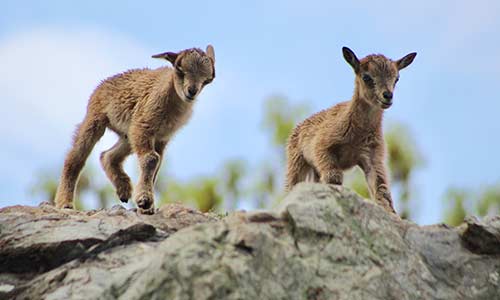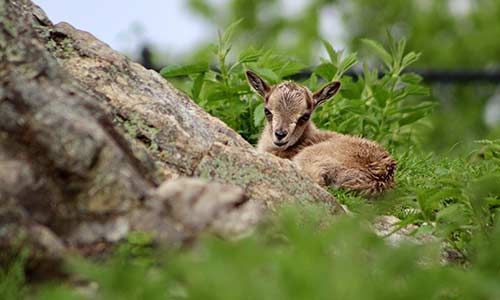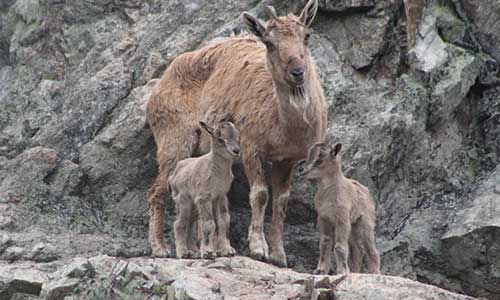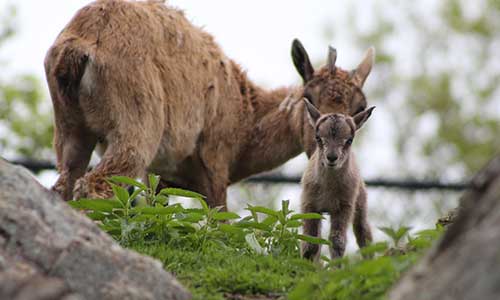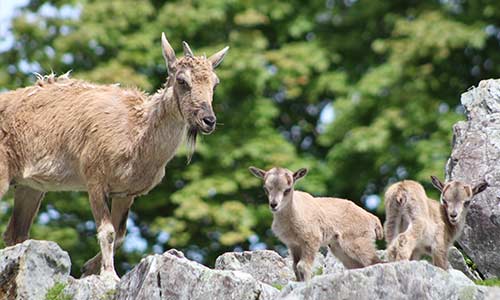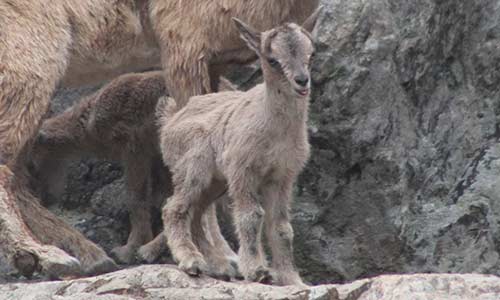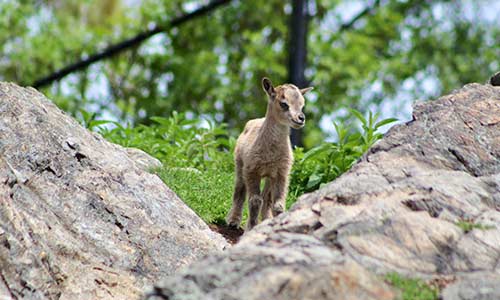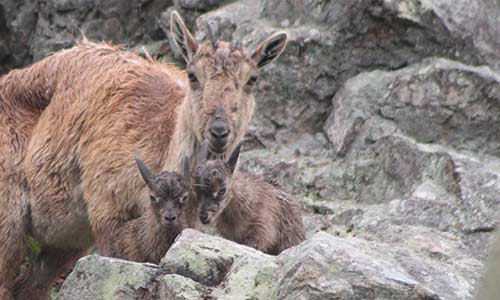New kids on the block at Stone Zoo with the birth of markhor twins!
Thursday May 24, 2018
|
UPDATE | JUNE 1: No kidding around – we’re happy to announce the birth of another set of markhor twins! The pair of females were born on May 22, just 10 days after the birth of the first twins. The two females underwent their neonatal physical exam last week and both appear healthy, weighing between 5-6 pounds each. All four of the new kids born in May can now be seen on exhibit in the Himalayan Highlands! |
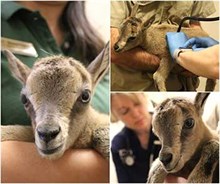 |
There are two new kids on the block at Stone Zoo with the recent birth of markhor twins, a mountain goat species native to the Himalayas. The goat kids were born on May 12 to parents Piddy Pat and Tyrion, and can be seen on exhibit within the Himalayan Highlands.
“Piddy Pat is a very attentive and experienced mother to the twins, who have been nursing well and appear strong and active. As with any new birth, we are closely monitoring the mother and babies,” said Pete Costello, Assistant Curator of Stone Zoo, who added, “The twins are agile and exploring the rocky terrain within their exhibit, which mimics the landscape of their native habitat.”
Zoo New England participates in the Markhor Species Survival Plan (SSP), which is a cooperative, inter-zoo program coordinated nationally through the Association of Zoos and Aquariums (AZA). SSPs are designed to maintain genetically diverse and demographically stable captive populations of species. This birth is the result of a recommended breeding.
Markhors are native to the Himalayan Mountains. Their range includes northern India, Pakistan, and Afghanistan, and they can typically be found living around or above the tree line. The largest of the wild goat species, markhor have broad hooves and striking spiral horns that can grow to three feet long in mature males. In the wild, this species faces a number of threats including hunting as well as competition for food. The long corkscrew horns that males develop as they mature are much sought after by trophy hunters. These animals are also competing against domestic livestock for food and water resources in their native habitat. Zoo New England has supported a project in Pakistan that works with local communities to sustainably manage markhor and other wildlife.
Photos courtesy of Bridget Collins Lyman

